Speaker: Bruce Howe - Chair, Joint Task Force for SMART Subsea Cables; Research Professor, University of Hawaii at Manoa
Abstract: SMART Subsea Cables will integrate environmental sensors into commercial submarine telecommunications cables spanning the global oceans supporting observations for climate, ocean circulation, sea level monitoring, structure of the Earth, and tsunami and earthquake early warning and disaster risk reduction. SMART cables will be one of the transformative technologies deployed at part of the 2021-2030 UN Decade for Ocean Science for Sustainable Development. We will provide an overview of the SMART Cable initiative and then describe the status of ongoing projects including: the InSea wet demonstration project off Sicily at the EMSO Western Ionian Facility to be installed 2022; a system connecting New Caledonia and Vanuatu; Indonesia working toward systems for the Sumatra-Java megathrust zone; Antarctica, and the CAM-2 system connecting Lisbon, Azores and Madeira in a ring. For the latter system, improved earthquake early warning with less loss of life will more than pay for the system (V. Silva, pers. comm.). Funding reflects a blend of government, development bank, and commercial contributions. In addition to notable scientific and societal benefits, the Telecom mission of societal connectivity will benefit as well, as environmental awareness will improve both individual cable system integrity and the overall global communications network. (SMART = Science Monitoring And Reliable Telecommunications)
Bio: Dr. Howe develops ocean observing infrastructure for the provision of power, communications, and positioning throughout the ocean volume, with an emphasis on cabled and acoustic systems.
As Chair of the international Joint Task Force (JTF) SMART Cable initiative, (Science Monitoring And Reliable Telecommunications), Dr. Howe is leading the effort to incorporate sensors into commercial trans-ocean submarine telecommunication cable systems to form a planetary scale observing system for climate, ocean circulation and sea level monitoring and tsunami and earthquake warning.
Past projects have included basin-scale acoustic thermometry, and planning, development and operation of cabled observatories. At Station ALOHA 100 km north of Oahu, Dr. Howe and his team installed and operate the ALOHA Cabled Observatory – the world’s deepest plug-and-play power and Internet node on the planet at 4728 m water depth, now with 10 years of continuous data.
After obtaining engineering and oceanography degrees at Stanford University and the University of California at San Diego, he has worked at the Applied Physics Laboratory, University of Washington, and since 2008, at the University of Hawaii at Manoa, Department of Ocean and Resources Engineering.
